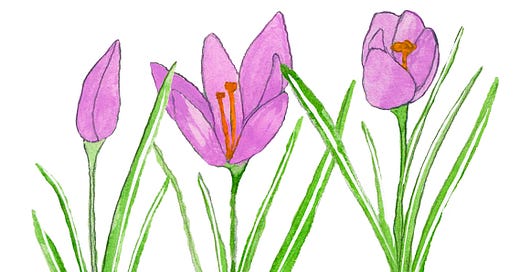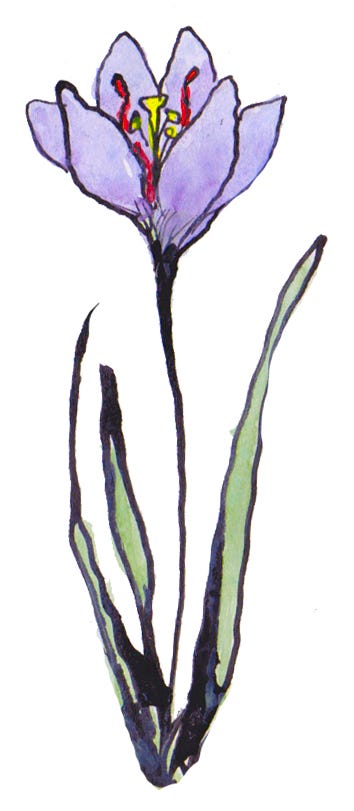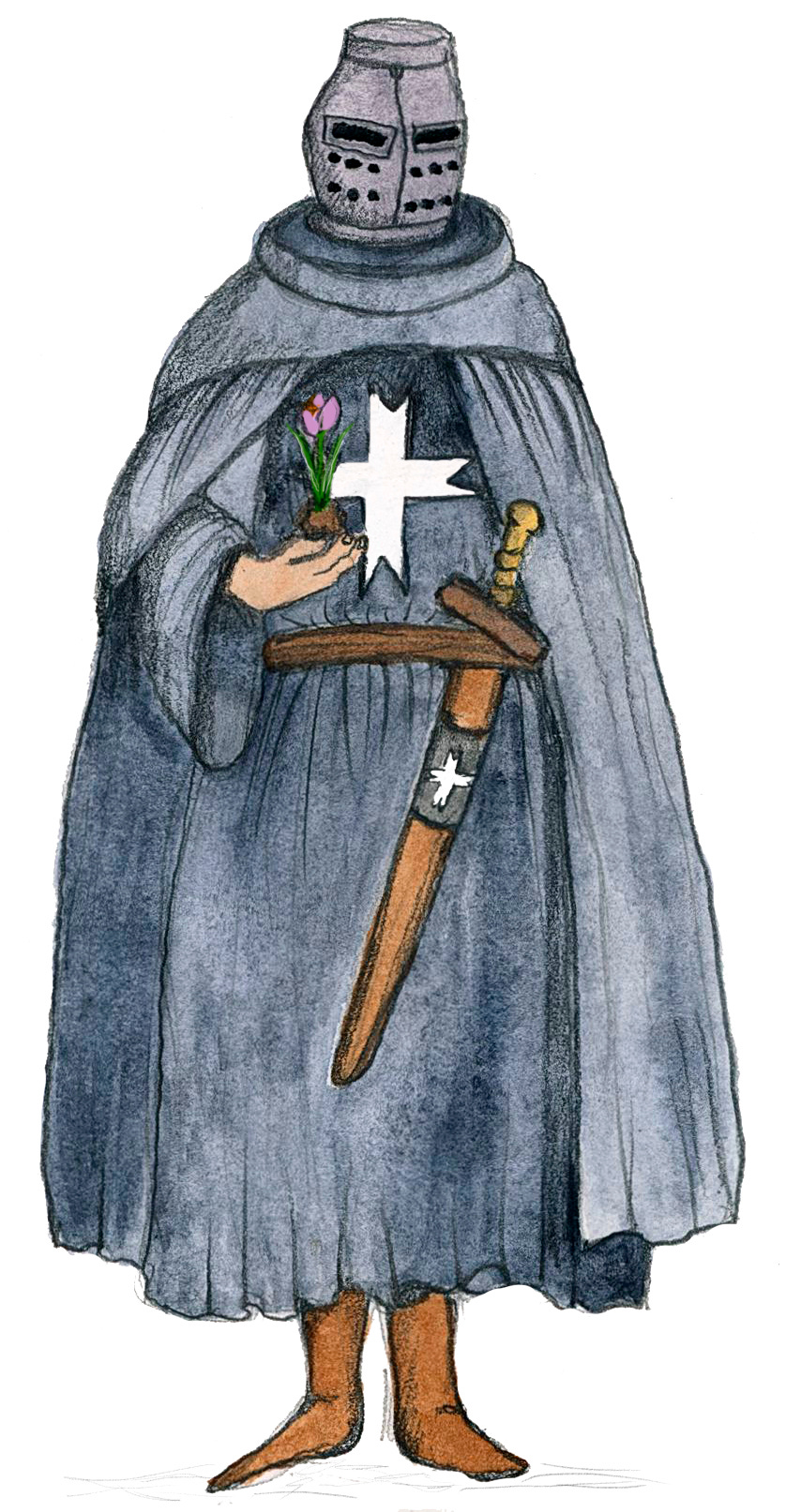The nymph, minor goddess and shepherdess, Smilax had a complicated love life, which involved a mortal young man from Arkadia, called Krokos. They had a difficult relationship. Some say Krokos’ affections were not returned by Smilax, but he kept pestering her, so she turned him into a flower, the Crocus.
Others say that it was Smilax, who was madly in love with Kronos instead. However, the gods overseeing things from Mount Olympus, felt that all this frolocking and mixing of minor gods with mortals wasn’t on. Never mind how handsome the mortal was. So they turned Krokos into a Crocus and Smilax into a type of bindweed.
But Krokos’ love woes were not limited to his troubled relationship with Smilax. Hermes, the god of travellers and messages, loved him too. Whilst cavorting about and playing sports together, Hermes accidentally chopped off Krokos’ head whilst throwing a discus. To hide the accidental manslaughter, Hermes immediately changed Krokos body into a flower with deep yellow-red stamen, reminding him forever of the blood that flowed. Those deep yellow stamen we now know as saffron and the flower named Crocus.
Ancient gods and magic beings seem to have a propensity to turn either themselves or others into flowers (see for example similarities with the daisy and ragged robin and the wood anemone).
The use of the word saffron and Crocus has a slightly confusing history. Initially the Greek word krokos led to the Old English word croh which means Saffron. Over time ‘croh’ for saffron got out of fashion and now only relates to the flower, rather than the spice made from its stamen.
The word saffron itself comes to us via 12th century Old French, ‘safren’ or ‘safran’ from the latin word ‘safranus’ meaning the spice. Although there are links with Hebrew word ‘karkōm’ and Persian word ‘kurkum’ too. Some herbals, including Maude Grieves’ ‘A Modern Herbal’ still refers to the main name of the crocus being saffron.
Crocuses came to Europe mainly through the crusaders who brought the bulbs back from their travels and planted them mainly in churchyards. Like the snowdrop, Crocuses are escapees gone wild.
The crocus was also spread by Benedictine Monks from the Cluniac Order who used to plant it in their gardens for medicinal reasons.
The scientific name, Crocus Tommasinianus, is in honour of Muzio G. Spirito de Tommasini (1794-1879), a botanist and the Mayor of Trieste. He played a big part in setting up a Natural History Museum in Trieste. Wild crocuses are therefore sometimes referred to as Tommies.
Last, but not least, a little tip from Pliny the Elder (23-79 AD), wear some saffron in a pouch around your neck and it will prevent you from getting drunk. Worth a try? Cheers!
This newsletter is NOT a field guide for flower identification. It’s often difficult to tell the difference between harmless plants and poisonous plants and some flowers are rare and protected by law, so, NEVER pick or use any plants or flowers if you’re not sure about them.
illustrations and text ©Chantal Bourgonje












